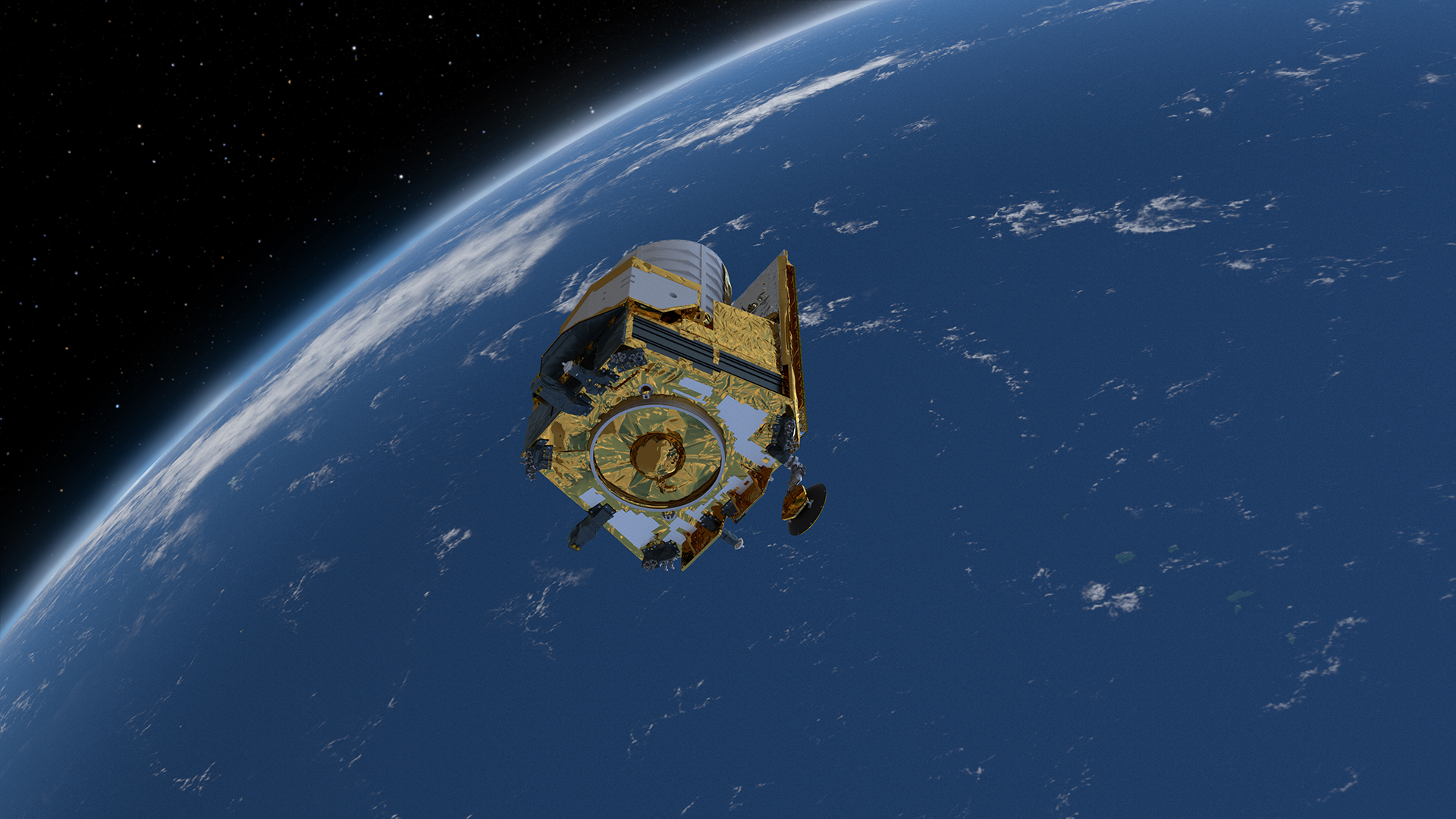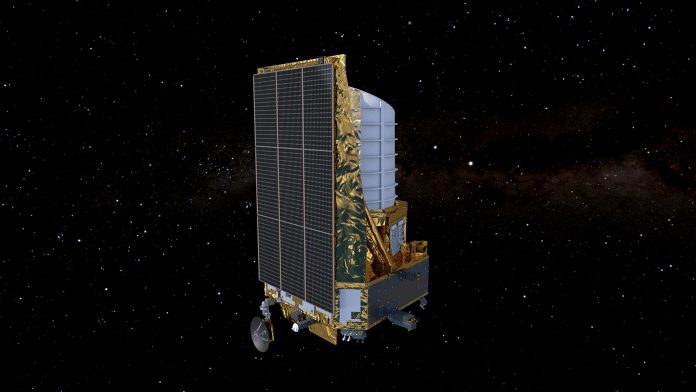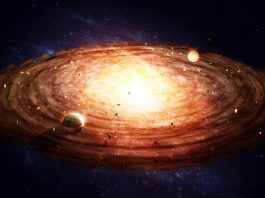With the imminent launch of next month’s Euclid mission, we take a look at how the revolutionary space telescope will help answer vital questions about enigmatic dark matter and energy.
The European Space Agency (ESA) Euclid mission is set to launch on 1 July in a quest to answer some of the most fundamental questions about the Universe. This new ESA space telescope comprises two cutting-edge scientific instruments onboard to solve important dark matter and energy mysteries, including:
- What is the distribution of dark matter in the Universe;
- What is the history of the expansion of the Universe;
- What does this tell us about the nature of dark energy; and
- How do large-scale structures form in the Universe.
What do we currently know about dark matter and energy?
Dark matter and dark energy are recently discovered phenomena that science is yet to understand. Until the last 20 to 30 years, it was believed that the Universe was made up of protons, neutrons and electrons. However, we now know this accounts for only 4% of the Universe’s mass-energy budget.
Dark matter and dark energy are now known to make up the rest of the mass-energy budget, causing the expansion of the Universe to accelerate. However, how dark matter and energy cause this is still unknown, as it cannot be explained by fundamental physics.
What will the Euclid mission do?
The Euclid mission will map the ‘Dark Universe’ to learn about dark energy and matter. The spacecraft will survey the sky to observe billions of galaxies across ten billion years of cosmic history.
Euclid will utilise gravitational lensing and baryonic acoustic oscillation (BAOs) to measure galaxy shapes and distortions to analyse the distribution and evolution of dark energy and matter.
Weak lensing will be employed to monitor distortions of galaxy images due to gravity, whereas BAOs are wiggle patterns imprinted in clustering galaxies that can be used to measure the Universe’s expansion.
However, weak lensing requires a visible image capable of extremely high image quality, and any optical distortions due to the instrument must be calibrated out so that any measurements obtained are due to gravity.
To ensure this, Euclid contains two state-of-the-art instruments:
- A visible imager (VIS) built by experts at the UK’s Mullard Space Science Lab (MSSL); and
- A near infrared spectrometer and photometer (NISP), led by France.
The UK’s £37m involvement in the project
The UK Space Agency has played an instrumental role in the Euclid mission, funding £37m to support seven research institutions across the UK. Euclid’s VIS is not only led by MSSL, but researchers nationwide have also pioneered data processing pipelines to analyse the data, such as the gravitational lensing analysis to create dark matter maps.

During its six-year mission, Euclid will be barraged by space radiation, which may damage its CCD detectors. The Open University has performed modelling and simulations to understand how radiation damage will affect instrument performance to mitigate its effects.
Additionally, the UK has taken a leading role in developing Euclid’s Ground Segment, including developing a science data centre in Edinburgh, which included contributions from several UK universities.
How to watch the launch
The Euclid mission will launch on a SpaceX Falcon 9 rocket from Cape Canaveral in Florida, USA, at 11:11 local time / 16:11 BST / 17:11 CEST on 1 July 2023. You can watch the launch live on ESA Web TV or via the ESA YouTube live stream.









